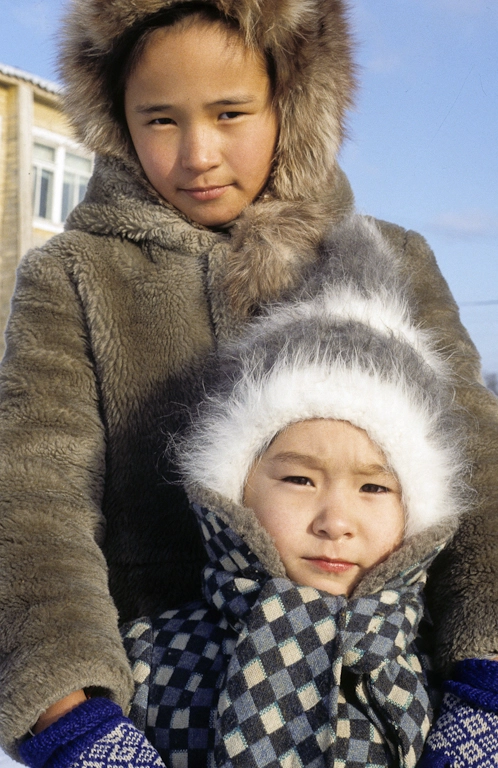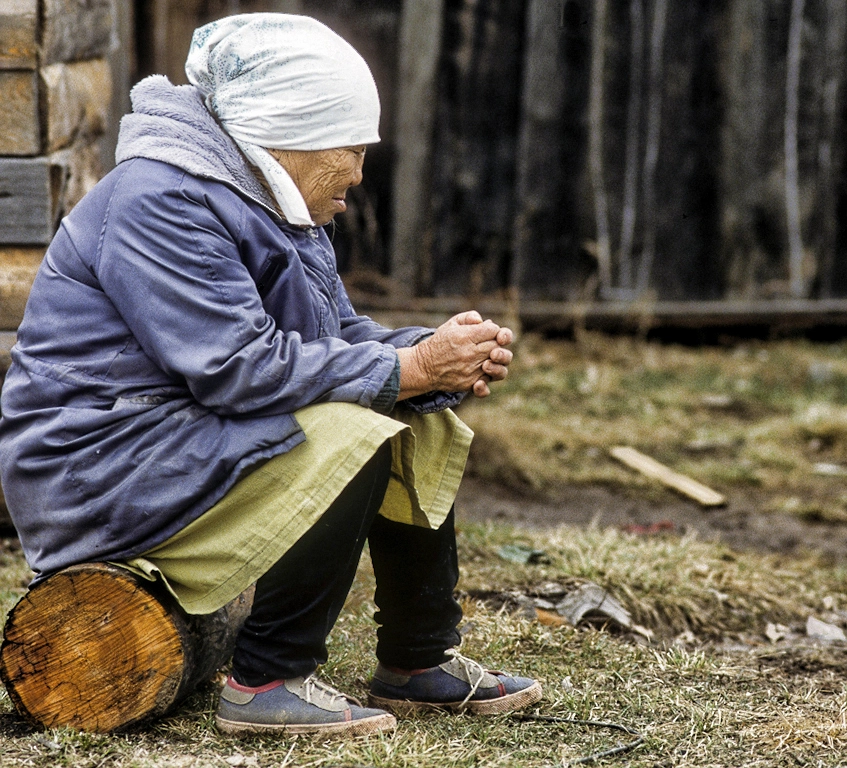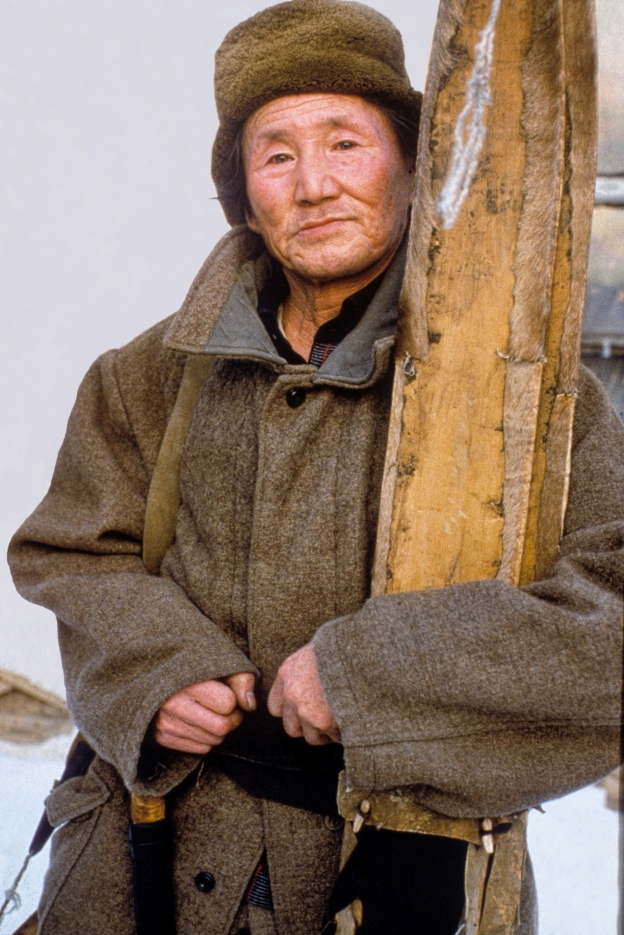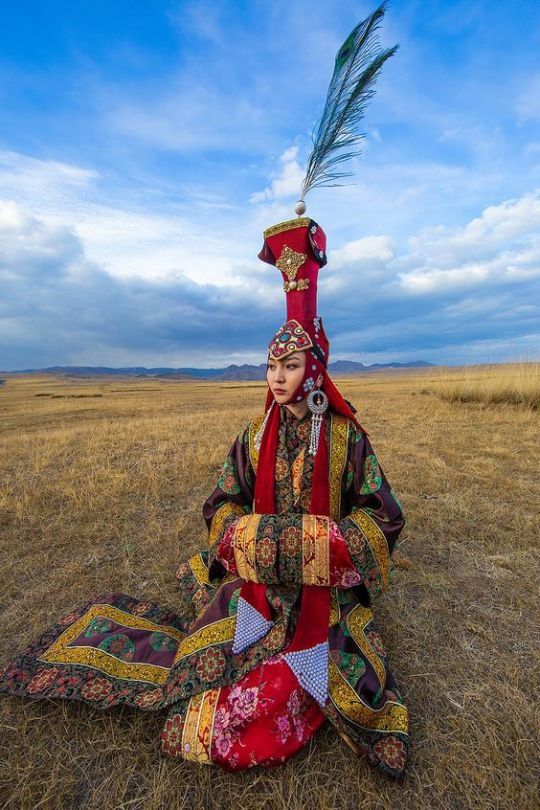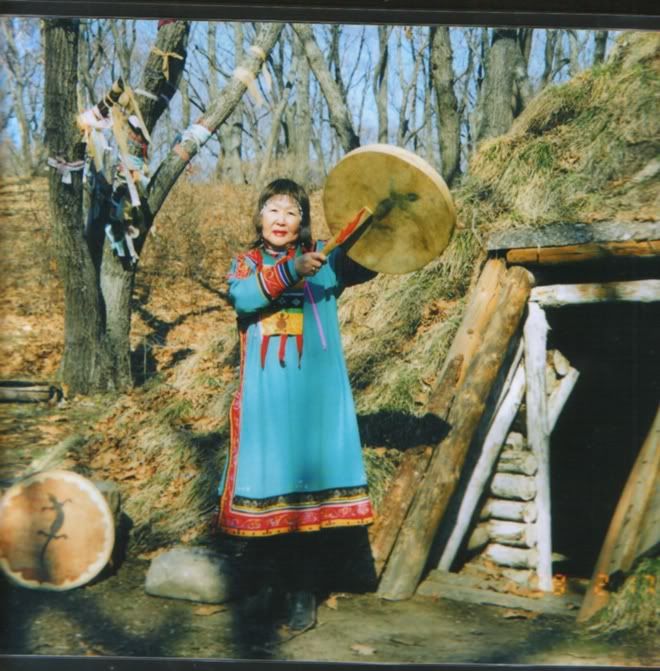Udege (Russian: Удэгейцы; Udihe: удиэ or удиһе, or Udihe, Udekhe, and Udeghe correspondingly) are a native people of the Primorsky Krai and Khabarovsk Krai regions in Russia. They live along the tributaries of the Ussuri, Amur, Khungari, and Anyuy Rivers. The Udege speak the Udege language, which belongs to the Tungusic language family. Their religious beliefs include animism, animal worship, and shamanism. The Udege are mainly engaged in hunting, fishing, and ginseng harvesting. According to the 2002 census, there were 1,657 Udege in Russia, a slight increase from 1,500 in 1970. This was down to 1,496 Udege in Russia in the 2010 census. They are one of the closest ethnic groups to the Manchu and Nanai, and are possibly of Xi Yeren Jurchen origin.

The largest settlements of Udege are in:
- Khabarovsk krai: Gvasiugi (Imeni Lazo District) and Arsenievo (Nanaysky District)
- Primorsky kra: Agzu (Terneysky District), Krasny Yar and Olon (Pozharsky District)
Since the advent of Perestroika, the Udege, led by Pavel Sulyandziga, have been actively involved in the struggle for control over their traditional territories along the Bikin River. A central objective has been the establishment of a Territory of Traditional Natural Resource Use of federal status, which was proposed in cooperation with the national umbrella organisation RAIPON and the Russian Institute of Anthropology and Ethnography but failed to be approved by the authorities.According to the 2001 Ukrainian census, out of 40 Udeges living in Ukraine, only 8 declared Udege as their native language. Most of the Udeges in Ukraine indicated Russian (19) or Ukrainian (6) as their native language. 7 of them named another language.

The indigenous Udege people, one of 48 indigenous peoples in Russia, inhabit the Ussuri taiga – temperate forest on the Sikhote-Alin mountains between the Sea of Japan and the Chinese border, running by the Ussuri river. This area contains the highest biodiversity in boreal Asia, including the endangered Siberian tiger (Panthera tigris) and many other rare species of fauna and flora. The entire Udege tribe includes around 2,500 people, spread over the Primorsky and Khabarovsky administrative territories in the Russian Far East (RFE). Most of them live in about 20 legal entities known as ‘obschina’ (indigenous or tribal communes). Their traditional areas, occupied over the centuries by Manchurians and then Russian Cossacks, now face rapid expansion of logging, hunting, salmon fishing, mining and industrial development. As a result the Udege communities, traditionally dependent on wildlife, fish, wood and non-timber forest products, are suffering from strong competition over the resources that sustain their livelihoods. Meat and fish play a key role in the diets of the Udege, and their traditional use for Udege livelihoods is recognised as being environmentally sustainable in Russian policy and law. Women have equal rights to men and while they seldom hunt or fish themselves, they play a significant role in dealing with officials, regulations and documents. Thus, they tend to be more aware of legal details and specific problems of fish and wildlife use and management than men, and often fulfill leadership positions in communes and associations.

Amidst the rolling foothills of the Sikhote-Alin Mountains live the Udege people, indigenous Asians who hunt in the one of the most unusual forests in the world — an old-growth taiga that is home for both bears and tigers. Only about 1,500 Udege exist in the world. The largest group lives in Krasny Yar, a village on the Bikin River. Hyundai wants to log the Udege’s traditional hunting grounds. Environmentalists say logging the area would destroy the habitat of the endangered Ussuri tiger. The Udege say it would destroy their livelihood and culture. Last August, when the villagers heard that logging was about to begin, six Udege hunters took their rifles and flew there by helicopter to guard the trees. Twelve Cossacks from Vladivostok joined forces with the Udege to “defend the border.” Hyundai withdrew the loggers, but the dispute has yet to be settled.

Deep in the Russian Far East, a small people are dying out. Civilisation Soviet-style has all but destroyed the indigenous Udege tribe of Siberia. Only 1,400 of the ancient hunting people are still thought to be alive. These few are trapped in a losing battle against big business and booze that has submerged centuries of culture and a language which only the old and dying can remember. Ramshackle, unloved, underfunded – the village of Krasny Yar is no different from thousands of other small villages dotted across the wastes of Siberia. Except in one respect – Krasny Yar is home to 400 Udege people. Or a little less than a third of the entire surviving Udege nation. For the Udege are a tribe on the edge of extinction, one of many indigenous Siberian peoples all but crushed by the onslaught of Soviet civilisation. The Udege were nomadic hunters, surviving on the fish and game of the Siberian tundra. The Soviets settled them in villages like Krasny Yar. Now their culture is dying. Only this elderly couple can still speak the native language. Soosan and Anna have seen their traditional way of life shattered.

The Udege or Udekhe people live in and near the city of Khabarovsk, Siberia, Russia. Khabarovsk is located 30 kilometers north of the Chinese border. The Udege used to practice a semi-nomadic lifestyle taking care of reindeer. The Russian Empire took over the area where the Udege live in 1858. Under Soviet rule, many of the Udekhe were resettled. Now there exist nine Udekhe villages all located some distance apart. With the threat of industry and development, the Udekhe are fighting for control over their traditional territories along the Bikin River in an effort to save their land, their culture and their language from becoming obsolete. There a danger that over the next few decades that the Udege people will be absorbed into the Russian majority population of Siberia. Young people prefer to speak Russian and do not want to learn Udege, the language of their grandparents. Many young people are marrying outside their people. Many of these children of these unions are not learning the customs and ways of the Udege. The Udege work in Russian factories, mines, refineries and in the logging industry. Some Udege still trap fur bearing animals as did their ancestors. Some hunt and fish to obtain food. Women plant vegetable gardens and gather berries during the short Siberian summers. Alcoholism is a major issue for many indigenous people in Russia.
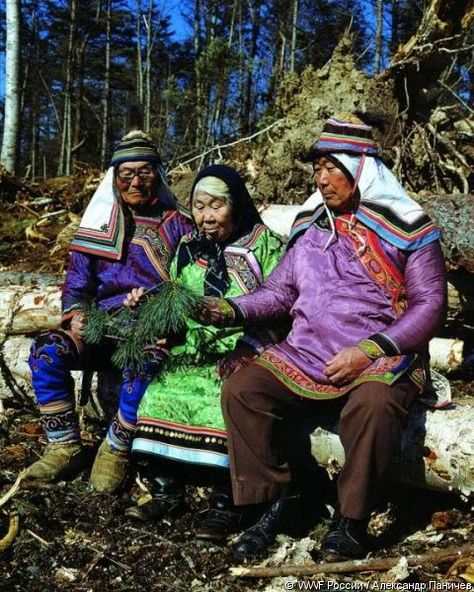
One of the largest rivers that flow through the Russian Far East is the Bikin. The territory of the Bikin River basin is sometimes referred to as the “Russian Amazon.” This region is well known, not only for its unique nature but also for its Indigenous Peoples, including the Udege and Nanai, who live in the Central Sikhote-Alin range. The cultural center of the Udege and Nanai is the Indigenous village of Krasny Yar. Many traditional festivals are carried out in Krasny Yar. Other Indigenous villages located in the same district are Olon, Yasenevo, and Sobolinoe. Udege and Nanai Peoples have been pursuing their traditional ways of life in the region for many centuries. They are hunters who also go fishing and gathering. Traditionally, Udege people considered that a tiger and a bear were their ancestors and they maintained a close relationship with the Bikin River. There are many legends about the history of the Udege people, the tiger, and the bear. One of the best-known stories has it that all Udege originated from the bear and that the tiger is their distant relative. In the story, there are two orphans, a girl and a boy. The girl was adopted by the bear, while the boy was adopted by the tiger. The girl married the wolf, and their children became the ancestors of Udege people. The boy married the she-tiger, but they did not have any children.
